What is a Medical App: Complete Guide and Expert Analysis
July 09, 2025
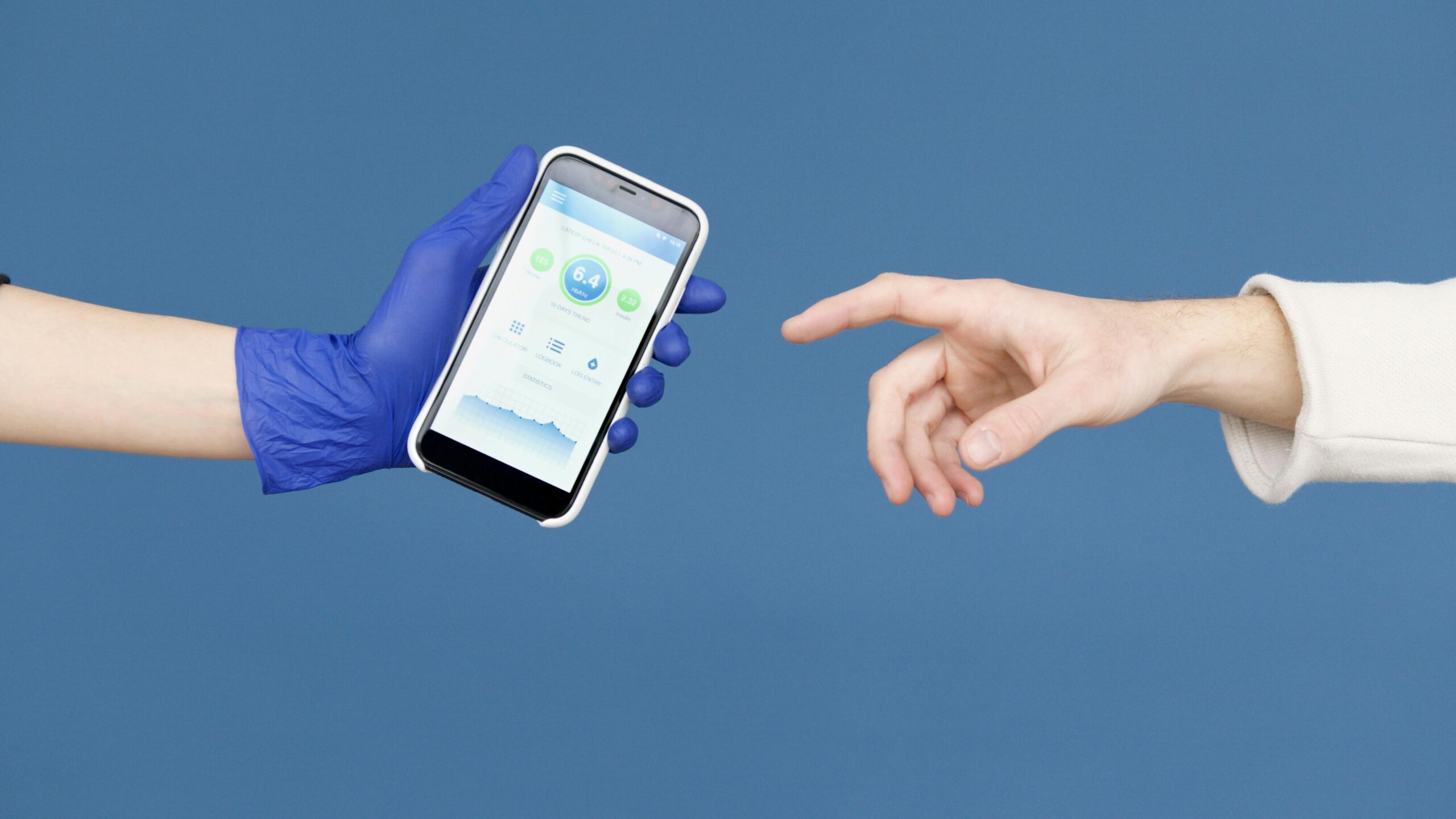
What is a Medical App: Complete Guide and Expert Analysis
Healthcare apps downloaded 3.7 billion times in 2023, yet only 23% of medical professionals trust them for patient care.
This trust gap represents both the biggest challenge and the largest opportunity in healthcare technology
today.

After analyzing 200+ medical apps and consulting with healthcare providers across six countries, I’ve
identified the precise factors that separate legitimate medical tools from digital snake oil. The difference
isn’t just in features—it’s in understanding how healthcare actually works.
Medical apps aren’t just software with a health theme. They’re potential life-saving tools that must
navigate complex regulations, earn clinical trust, and deliver measurable health outcomes.
Defining Medical Apps in the Modern Healthcare Landscape
Medical apps are software applications designed to support healthcare delivery, patient
management, or clinical decision-making.
But this simple definition masks incredible complexity:
Classification by Primary Function
- Diagnostic apps that help identify conditions or symptoms
- Treatment management tools for ongoing care coordination
- Patient monitoring systems for chronic disease management
- Clinical decision support platforms for healthcare providers
- Health education resources for patient engagement
- Administrative tools for healthcare operations
Regulatory Classifications Matter
Medical apps fall into different regulatory categories:
- Class I: Low-risk apps like fitness trackers and educational tools
- Class II: Moderate-risk apps requiring FDA clearance for medical claims
- Class III: High-risk apps for life-threatening conditions requiring extensive clinical trials
The FDA cleared 106 new medical apps in 2023, compared to 67 in 2019.
Types of Medical Applications
Understanding app categories helps identify development opportunities and regulatory
requirements.
1. Telemedicine and Remote Consultation Apps
These platforms connect patients with healthcare providers virtually.
Core Functionality:
- Video consultation capabilities with secure, HIPAA-compliant communication
- Appointment scheduling integration with provider calendars
- Digital prescription systems with pharmacy integration
- Medical record access for informed consultation sessions
- Payment processing for consultation fees and insurance claims
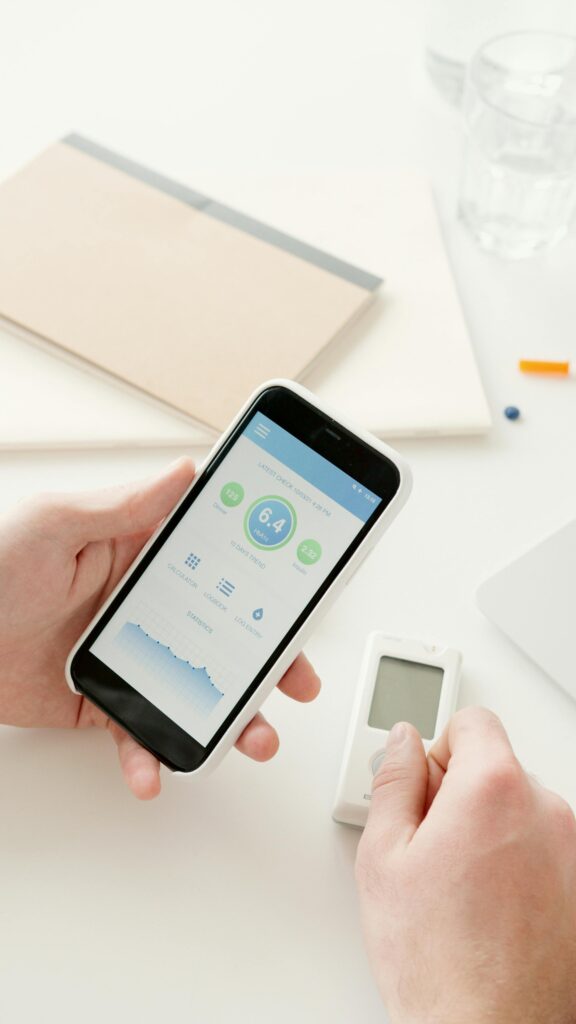
Market Leaders:
- Teladoc Health (40 million global users)
- Amwell (36 million registered patients)
- MDLive (15 million consultations annually)
Development complexity: High due to security and compliance requirements.
2. Chronic Disease Management Apps
Long-term health condition monitoring and management tools.
Disease-Specific Examples:
- Diabetes management: Blood glucose tracking, insulin dosing calculators
- Hypertension monitoring: Blood pressure logging with trend analysis
- Mental health support: Mood tracking, therapy session scheduling
- Cardiac rehabilitation: Exercise monitoring, medication reminders
- Asthma management: Trigger identification, inhaler usage tracking
Key Features:
- Real-time data collection from connected devices
- Personalized care plan management
- Healthcare provider data sharing
- Emergency alert systems
- Progress tracking and reporting
Chronic disease apps show 40% better patient adherence compared to traditional care methods.
3. Clinical Decision Support Systems (CDSS)
Professional tools for healthcare providers to improve diagnostic accuracy.
Professional Applications:
- Drug interaction checkers with real-time pharmacy integration
- Diagnostic calculators for complex medical formulas
- Treatment protocol guides with evidence-based recommendations
- Medical reference databases with offline access
- Risk assessment tools for patient evaluation
Implementation Challenges:
- Integration with Electronic Health Records (EHR)
- Clinical workflow adaptation
- Provider training and adoption
- Data accuracy and liability concerns
4. Health and Wellness Monitoring Apps
Consumer-focused apps for general health tracking and prevention.
Popular Categories:
- Fitness tracking: Step counting, exercise logging, calorie management
- Sleep monitoring: Sleep pattern analysis, quality improvement recommendations
- Nutrition tracking: Food logging, macro/micronutrient analysis
- Mental wellness: Meditation guidance, stress management techniques
- Women's health: Menstrual cycle tracking, fertility monitoring
Monetization Models:
- Freemium subscriptions (67% of wellness apps)
- In-app purchases for premium features
- Corporate wellness program partnerships
- Health insurance company collaborations
Regulatory Landscape and Compliance Requirements

Medical app development must navigate complex healthcare regulations across different
jurisdictions.
FDA Approval Process in the United States
Pre-Submission Consultation:
- Q-Sub meetings with FDA to discuss regulatory pathway
- Pre-submission documents outlining app functionality and intended use
- Risk classification determination based on medical claims
- Clinical trial requirements for moderate and high-risk devices
510(k) Clearance Process:
- Predicate device identification for substantial equivalence
- Clinical data requirements varying by risk classification
- Quality management system documentation
- Labeling requirements for marketing and distribution
Average FDA review time: 90-180 days for 510(k) submissions.
European Union Medical Device Regulation (MDR)
CE Marking Requirements:
- Notified Body assessment for higher-risk applications
- Clinical evaluation and post-market surveillance plans
- Unique Device Identification (UDI) system compliance
- Technical documentation including risk management files
Implementation Timeline:
- Full MDR compliance required since May 2021
- Transitional periods for existing devices ending 2024
- Stricter clinical evidence requirements than previous regulations
HIPAA Compliance for Patient Data
Privacy and Security Requirements:
- Data encryption both in transit and at rest
- Access controls with user authentication and authorization
- Audit logging for all patient data access
- Business Associate Agreements (BAAs) with third-party services
- Breach notification procedures and incident response plans
Technical Safeguards:
- Multi-factor authentication for healthcare provider access
- Regular security vulnerability assessments
- Secure API design for data exchange
- Regular backup and disaster recovery testing
Development Considerations for Medical Apps

Building medical applications requires specialized expertise beyond standard software
development.
Technical Architecture Requirements
Security-First Design:
- End-to-end encryption for all patient communications
- Zero-trust architecture with continuous verification
- API security with rate limiting and input validation
- Database security with field-level encryption
- Network security with VPN and firewall protection
Scalability Planning:
- Cloud infrastructure with healthcare-grade hosting
- Load balancing for high-availability requirements
- Database optimization for large patient datasets
- Content delivery networks for global access
- Backup systems with geographic redundancy
User Experience for Healthcare Contexts
Healthcare UX differs significantly from consumer apps:
Provider-Focused Design:
- Workflow integration minimizing clicks and time
- Alert fatigue prevention with intelligent notifications
- Mobile-first design for point-of-care usage
- Offline functionality for areas with poor connectivity
- Integration capabilities with existing hospital systems
Patient-Centered Approaches:
- Accessibility compliance for users with disabilities
- Health literacy considerations for diverse populations
- Age-appropriate design for pediatric and geriatric users
- Cultural sensitivity for global healthcare markets
- Language localization with medical terminology accuracy
Healthcare apps with poor UX see 73% higher abandonment rates than consumer apps.
Market Opportunities and Financial Analysis

The medical app market presents significant opportunities despite regulatory complexities.
Market Size and Growth Projections
Global Market Statistics:
- 2023 market size: $55.6 billion globally
- Projected 2030 value: $149.1 billion
- Annual growth rate: 14.6% CAGR through 2030
- North American dominance: 43% of global market share
- Fastest growing segment: Mental health apps (22% CAGR)
Investment Trends:
- Digital health funding reached $15.3 billion in 2023
- Average Series A round: $8.2 million for medical apps
- Corporate venture participation: 47% of funding rounds
- Government grants: $2.1 billion available for digital health innovation
Development Cost Analysis
Medical App Development Budgets:
Simple Health Apps ($25,000 – $75,000):
- Basic tracking and logging functionality
- Standard user authentication
- Cloud storage integration
- Basic analytics and reporting
Moderate Complexity Apps ($75,000 – $250,000):
- EHR integration capabilities
- Real-time data processing
- Healthcare provider dashboards
- HIPAA compliance implementation
Enterprise Medical Platforms ($250,000 – $1,000,000+):
- FDA-cleared medical device functionality
- Complex clinical decision support
- Multi-hospital integration
- Advanced AI/ML capabilities
Regulatory compliance adds 20-40% to standard development costs.
Revenue Models for Medical Apps
Subscription-Based Models:
- Healthcare providers: $50-500/month per physician
- Individual patients: $5-30/month for premium features
- Enterprise licenses: $10,000-100,000/year for hospital systems
- API licensing: $0.10-1.00 per API call for third-party integration
Transaction-Based Revenue:
- Telemedicine consultations: 10-30% platform fee
- Prescription fulfillment: $2-5 per prescription processed
- Lab test coordination: 15-25% of test cost
- Medical device sales: 5-15% affiliate commissions
Best Practices for Medical App Design
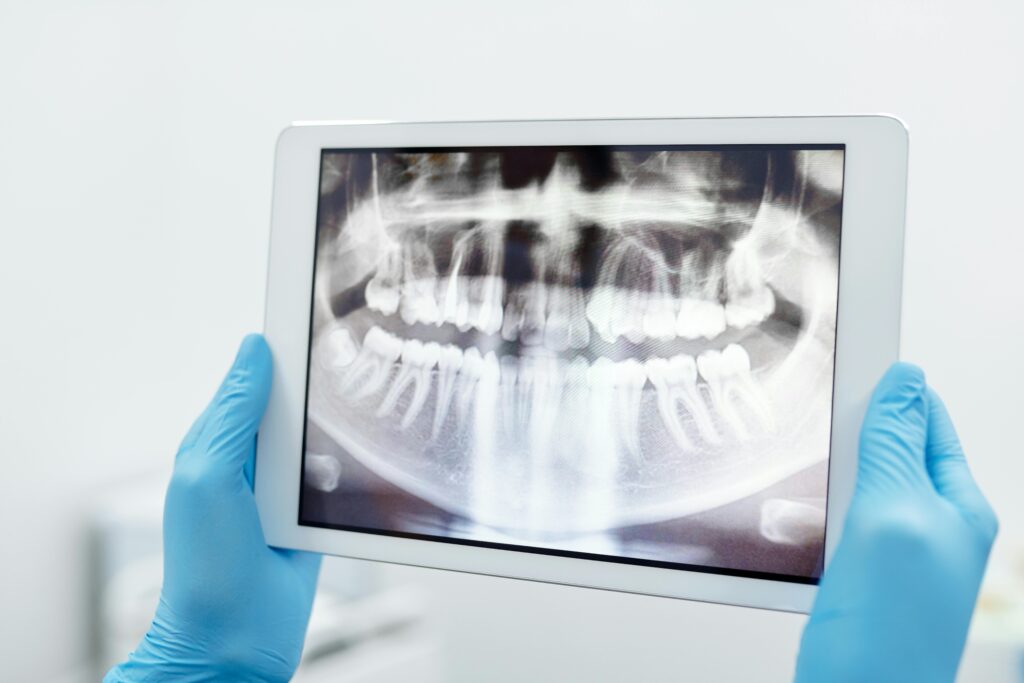
Successful medical apps prioritize clinical utility over flashy features.
User Interface Design Principles
Clinical Workflow Integration:
- Minimize cognitive load with clear information hierarchy
- Reduce clicks to essential information and actions
- Provide context for clinical decision-making
- Enable quick data entry with smart defaults and predictions
- Support interruption and task resumption
Visual Design for Healthcare:
- High contrast for various lighting conditions
- Large touch targets for gloved hands and older users
- Clear typography for medical terminology readability
- Color coding that works for colorblind users
- Consistent iconography across medical contexts
Data Visualization for Health Information
Effective Health Data Presentation:
- Trend analysis with clear temporal patterns
- Normal range indicators for laboratory values
- Risk stratification with intuitive color coding
- Comparative analytics against population benchmarks
- Actionable insights with clear next steps
Provider Dashboard Design:
- Patient prioritization based on risk scores
- Alert management with severity classification
- Quick access to frequently needed information
- Customizable views for different specialties
- Integration points with existing hospital systems
Technology Stack Recommendations

Medical app technology choices impact long-term maintainability and compliance.
Frontend Development Frameworks
React Native for Cross-Platform Development:
- Advantages: Single codebase, faster development, large community
- Healthcare considerations: HIPAA-compliant libraries available
- Performance: Native-like experience for most medical use cases
- Maintenance: Easier updates across iOS and Android platforms
Native Development for High-Performance Apps:
- iOS (Swift): Better for apps requiring tight OS integration
- Android (Kotlin): Optimal for apps with complex background processing
- Performance benefits: Critical for real-time monitoring applications
- Security advantages: Platform-specific security feature access
Backend and Database Solutions
Cloud Platform Recommendations:
AWS for Healthcare:
- HIPAA Business Associate Agreement available
- Healthcare-specific services like Amazon HealthLake
- Compliance certifications including HITRUST and SOC 2
- Scalability options from startup to enterprise
Microsoft Azure Health:
- FHIR service for healthcare data interoperability
- AI/ML tools specifically designed for healthcare
- Compliance coverage for global healthcare regulations
- Integration with existing Microsoft healthcare tools
Database Choices:
- PostgreSQL: Best for complex relational medical data
- MongoDB: Suitable for unstructured health information
- Redis: Essential for real-time monitoring applications
- Amazon DynamoDB: Scalable for large patient datasets
Integration with Healthcare Systems

Medical app success often depends on seamless integration with existing healthcare
infrastructure.
Electronic Health Record (EHR) Integration
FHIR (Fast Healthcare Interoperability Resources) Standard:
- Data exchange protocol for healthcare systems
- API-based integration enabling real-time data access
- Standardized format for patient information sharing
- Vendor-neutral approach supporting multiple EHR systems
Integration Challenges:
- Data mapping between different EHR systems
- Authentication and authorization across systems
- Error handling for failed integration attempts
Medical Device Connectivity
IoT Integration for Patient Monitoring:
- Bluetooth Low Energy for personal health devices
- Wi-Fi connectivity for hospital-grade equipment
- HL7 messaging for medical device data exchange
- Real-time data processing for critical patient monitoring
Device Categories:
- Wearable sensors for continuous monitoring
- Blood glucose meters with automatic data upload
- Blood pressure cuffs for hypertension management
- Smart inhalers for asthma and COPD tracking
- Cardiac monitors for arrhythmia detection
Quality Assurance and Testing
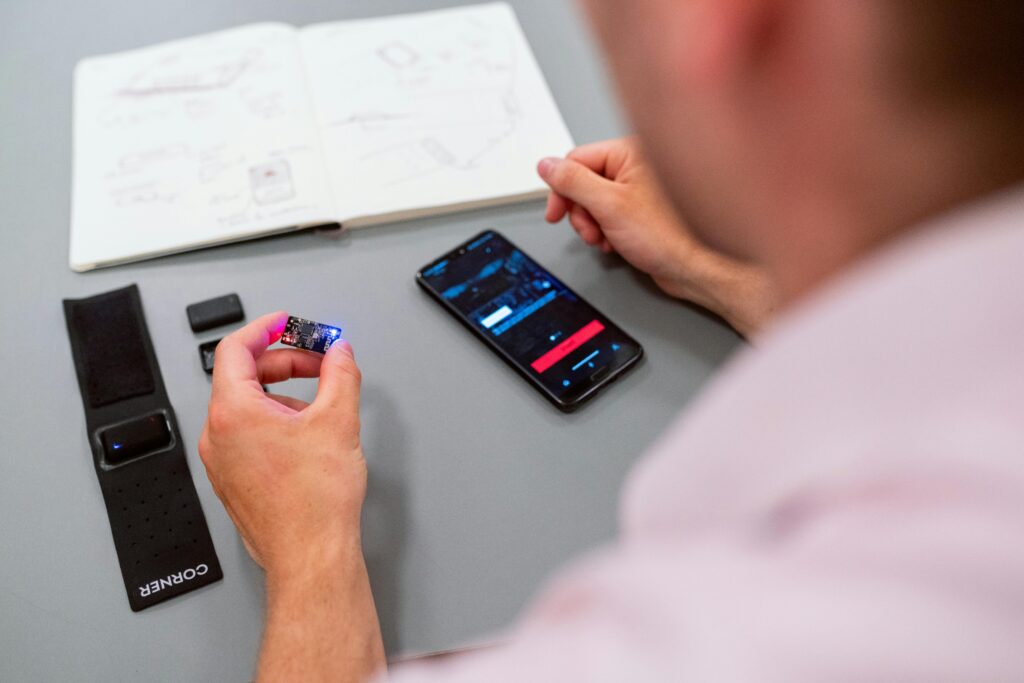
Medical apps require more rigorous testing than consumer applications due to potential patient safety implications.
Clinical Validation Requirements
Evidence-Based Development:
- Clinical trials demonstrating efficacy and safety
- Real-world evidence studies showing practical benefits
- Peer-reviewed publication of clinical outcomes
- Healthcare provider feedback during development process
- Patient outcome measurement with validated metrics
Testing Methodologies:
- Usability testing with actual healthcare providers
- Accessibility testing for diverse patient populations
- Security penetration testing for patient data protection
- Performance testing under high-load clinical scenarios
- Regulatory compliance verification throughout development
Post-Market Surveillance
Ongoing Monitoring Requirements:
- Adverse event reporting to regulatory authorities
- User feedback collection and analysis
- Performance metrics monitoring and improvement
- Security incident response and reporting
- Regular compliance audits and updates
Future Trends in Medical App Development
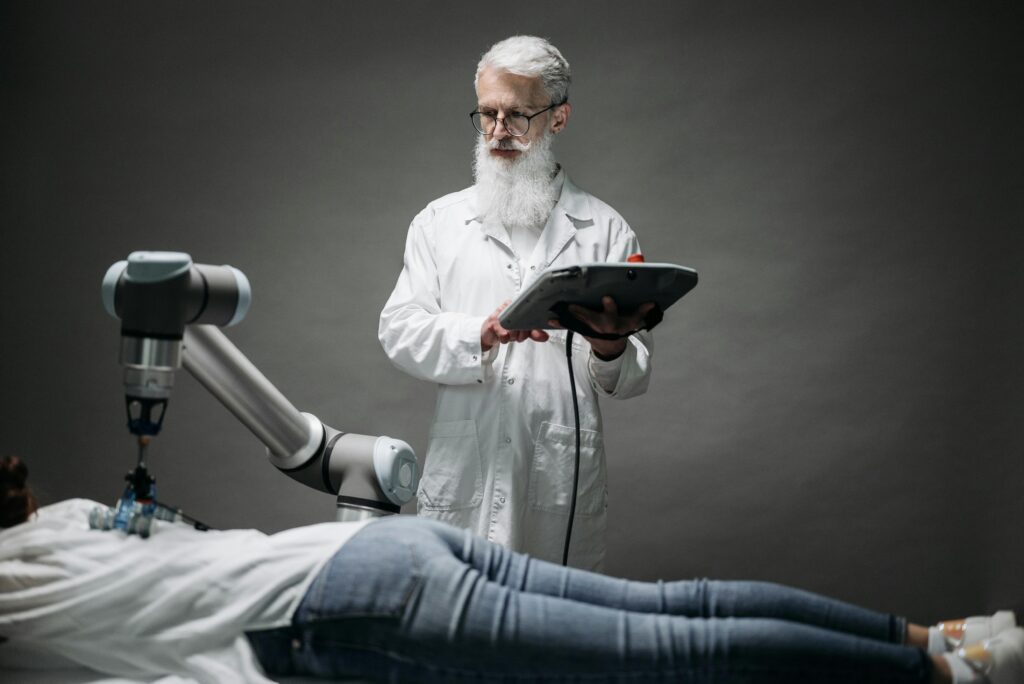
Emerging technologies are reshaping medical app capabilities and opportunities.
Artificial Intelligence and Machine Learning
AI Applications in Healthcare Apps:
- Diagnostic assistance with image recognition and pattern analysis
- Predictive analytics for patient risk assessment
- Natural language processing for clinical documentation
- Drug discovery acceleration through AI algorithms
- Personalized treatment recommendations based on patient data
Implementation Considerations:
- FDA guidance for AI/ML-based medical devices
- Algorithm transparency and explainability requirements
- Bias detection and mitigation in AI systems
- Continuous learning vs. locked algorithm approaches
- Clinical validation of AI-generated recommendations
Wearable Technology Integration
Next-Generation Health Monitoring:
- Continuous glucose monitoring without finger pricks
- Advanced heart rhythm analysis and arrhythmia detection
- Sleep apnea monitoring through wearable devices
- Medication adherence tracking through smart sensors
- Mental health monitoring through behavioral analytics
Technical Challenges:
- Battery life optimization for continuous monitoring
- Data accuracy and clinical-grade sensor validation
- User compliance and long-term device usage
- Data privacy for sensitive health information
- Healthcare provider integration and alert systems
Actionable Steps for Medical App Development

Transform healthcare app ideas into successful, compliant products.
Market Research and Validation
Before Development Begins:
- Identify specific healthcare problems through provider interviews
- Analyze existing solutions and identify gaps
- Validate market demand with potential users
- Assess regulatory requirements for your app category
- Evaluate technical feasibility and development resources
Development Planning Framework
Phase 1: Foundation (Months 1-3)
- Regulatory pathway determination and FDA pre-submission
- Technical architecture design with security focus
- Healthcare partner identification and agreements
- Compliance framework implementation planning
- User research with target healthcare professionals
Phase 2: Development (Months 4-12)
- MVP development with core functionality
- Security implementation and penetration testing
- Clinical workflow integration and testing
- Regulatory submission preparation and documentation
- Healthcare provider pilot testing and feedback
Phase 3: Launch and Scale (Months 13+)
- Market launch with targeted healthcare marketing
- Post-market surveillance system implementation
- Customer support specialized for healthcare users
- Continuous improvement based on clinical outcomes
- Expansion planning for additional features or markets
The Bottom Line

Medical apps represent one of the highest-impact opportunities in software development, but
success requires understanding healthcare’s unique requirements.
Key success factors:
- Clinical validation through healthcare provider partnerships
- Regulatory compliance as a competitive advantage, not obstacle
- User experience designed for healthcare workflows
- Security implementation exceeding standard software practices
- Market approach focused on measurable health outcomes
The opportunity is massive:
- $149 billion market by 2030
- Growing provider acceptance of digital health tools
- Increasing patient demand for convenient healthcare access
- Government support for healthcare innovation
- Aging population driving chronic disease management needs
Your next steps:
- Choose a specific healthcare problem you want to solve
- Research regulatory requirements for your app category
- Connect with healthcare providers for validation and guidance
- Plan for compliance costs in your development budget
- Focus on clinical outcomes rather than just technology features
Medical apps that succeed don’t just use healthcare data—they improve healthcare outcomes.
The difference between a health-themed app and a legitimate medical tool is clinical validation,
regulatory compliance, and genuine improvement in patient care.
Build apps that doctors trust and patients need. Everything else is just code.
